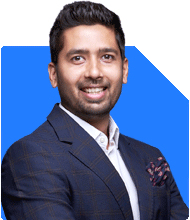Ramalingam Kalirajan |9535 Answers |Ask -Follow
Mutual Funds, Financial Planning Expert - Answered on Nov 14, 2024
He has an MBA in finance from the University of Madras and is a certified financial planner.
He is the director and chief financial planner at Holistic Investment, a Chennai-based firm that offers financial planning and wealth management advice.... more

I have corpus of 60 lkh ( from several MF / ULIP etc) ... can you please guide me how to invest in SWP to get regular monthly income of Rs.60000/- from Jan 2025 My prsent age is 52.. Or you may suggest me what is good for me .. Please.
Step 1: Establishing Clear Monthly Income Goals
Target Monthly Income:
Your goal is to achieve Rs 60,000 per month starting January 2025.
This translates to an annual requirement of Rs 7.2 lakh.
Inflation Consideration:
Since you’re only 52, consider a small annual increase to combat inflation.
Keeping up with inflation will ensure purchasing power in the long term.
Step 2: Setting Up a Systematic Withdrawal Plan (SWP)
An SWP in mutual funds can provide regular monthly income while preserving the principal amount as much as possible.
Choosing the Right Funds:
Balanced Advantage Funds: These funds adjust equity and debt exposure based on market conditions, balancing returns with risk.
Hybrid Funds: They provide a blend of stability and growth by investing in both equity and debt.
Avoiding Index Funds and Direct Funds:
Index funds lack active management, which limits flexibility in volatile markets.
Direct funds lack professional guidance, which can make it difficult to meet long-term goals effectively.
Opting for regular funds through a Certified Financial Planner ensures proper management.
Tax Efficiency:
Equity mutual funds have tax benefits if held for the long term.
Under the latest tax rules, long-term capital gains (LTCG) above Rs 1.25 lakh are taxed at 12.5%.
Short-term gains (STCG) are taxed at 20%, making long-term holding more beneficial.
Step 3: Portfolio Allocation for Monthly Income Stability
Equity Allocation:
Allocating around 40-50% to equity-oriented funds can provide long-term growth.
Equity offers potential for higher returns, which helps in beating inflation.
Debt Allocation:
The remaining 50-60% can be invested in debt mutual funds, which provide stability and predictable returns.
Debt funds will reduce risk and make monthly income more predictable.
Reinvesting Dividends:
Choose growth options within funds for better compounding.
An SWP can draw monthly amounts, making reinvestment of dividends unnecessary.
Adjusting for Market Conditions:
Your Certified Financial Planner can help adjust allocation based on market conditions.
This flexibility in allocation is especially valuable during volatile periods.
Step 4: Structured Monthly Income through SWP
Setting Up the SWP:
Begin withdrawals from January 2025 as per your need of Rs 60,000 per month.
Withdrawals can be set at a fixed date each month for consistency.
Protecting Capital:
With careful management, the SWP will sustain monthly income without depleting capital too quickly.
Regular reviews by your Certified Financial Planner will optimise your withdrawal rate to maintain capital longevity.
Step 5: Emergency Fund Allocation
Importance of Liquidity:
It’s vital to keep an emergency fund for unexpected expenses, separate from your investment corpus.
A sum equivalent to 6-12 months of expenses should be set aside in liquid funds or a high-yield savings account.
Avoiding Disruption in SWP:
By keeping an emergency fund, you avoid dipping into your SWP or investment corpus during unexpected times.
Step 6: Monitoring and Rebalancing the Portfolio
Periodic Portfolio Reviews:
Regular monitoring helps ensure the SWP is meeting your monthly income goals.
Market conditions and personal financial needs may shift over time, requiring adjustments.
Rebalancing Asset Allocation:
Rebalancing the equity and debt portions periodically helps maintain the ideal risk-return balance.
Your Certified Financial Planner can assist in rebalancing to preserve capital and income stability.
Step 7: Avoiding Common Pitfalls
Avoid High-Risk Investments:
Avoid aggressive equity investments, which could lead to losses.
Stick to a balanced portfolio that aligns with your risk tolerance.
Not Over-Estimating Withdrawal Rates:
Withdrawing too high an amount each month can deplete capital quickly.
A Certified Financial Planner can calculate a safe withdrawal rate to sustain income long term.
Avoid Direct Investments:
Direct investments lack the guidance and expertise needed for steady income.
Opt for regular funds managed by a Certified Financial Planner for a structured approach.
Step 8: Health and Life Insurance Considerations
Health Insurance Coverage:
As you approach retirement, health insurance becomes essential to cover medical expenses.
Ensure you have a comprehensive plan that meets healthcare needs without impacting your SWP.
Reviewing Life Insurance:
If you hold ULIPs or LIC investment-cum-insurance policies, consider surrendering them for better investment options.
The saved premiums can be reinvested in mutual funds to further support your SWP income.
Step 9: Future Planning Beyond SWP
Retirement Planning:
As you age, inflation will affect purchasing power. Ensure periodic reviews and adjustments to your SWP.
Discuss with your Certified Financial Planner ways to adjust income as expenses increase.
Consider Your Long-Term Needs:
Factor in potential future expenses such as medical costs or travel.
A well-planned SWP will allow flexibility for additional withdrawals if needed.
Final Insights
With a well-planned SWP, you can enjoy a steady income of Rs 60,000 per month without depleting your capital too soon. By choosing the right funds, balancing equity and debt, and consulting a Certified Financial Planner, you’ll achieve consistent income with minimal risk. Periodic reviews and adjustments will ensure your investments stay aligned with your needs, providing peace of mind in retirement.
Best Regards,
K. Ramalingam, MBA, CFP,
Chief Financial Planner,
www.holisticinvestment.in
https://www.youtube.com/@HolisticInvestment
You may like to see similar questions and answers below
Milind Vadjikar | Answer |Ask -Follow
Insurance, Stocks, MF, PF Expert - Answered on Sep 12, 2024
Kirtan A Shah | Answer |Ask -Follow
MF Expert, Financial Planner - Answered on Jul 26, 2023
Ramalingam Kalirajan |9535 Answers |Ask -Follow
Mutual Funds, Financial Planning Expert - Answered on May 06, 2024
Ramalingam Kalirajan |9535 Answers |Ask -Follow
Mutual Funds, Financial Planning Expert - Answered on Oct 21, 2024
Ramalingam Kalirajan |9535 Answers |Ask -Follow
Mutual Funds, Financial Planning Expert - Answered on Apr 01, 2025
Nayagam P P |8339 Answers |Ask -Follow
Career Counsellor - Answered on Jul 09, 2025
Nayagam P P |8339 Answers |Ask -Follow
Career Counsellor - Answered on Jul 09, 2025
Nayagam P P |8339 Answers |Ask -Follow
Career Counsellor - Answered on Jul 09, 2025
Nayagam P P |8339 Answers |Ask -Follow
Career Counsellor - Answered on Jul 09, 2025
Dr Upneet Kaur |54 Answers |Ask -Follow
Marriage counsellor - Answered on Jul 09, 2025
Nayagam P P |8339 Answers |Ask -Follow
Career Counsellor - Answered on Jul 09, 2025
Ramalingam Kalirajan |9535 Answers |Ask -Follow
Mutual Funds, Financial Planning Expert - Answered on Jul 09, 2025
Nayagam P P |8339 Answers |Ask -Follow
Career Counsellor - Answered on Jul 09, 2025
Ramalingam Kalirajan |9535 Answers |Ask -Follow
Mutual Funds, Financial Planning Expert - Answered on Jul 09, 2025
Ramalingam Kalirajan |9535 Answers |Ask -Follow
Mutual Funds, Financial Planning Expert - Answered on Jul 09, 2025




















